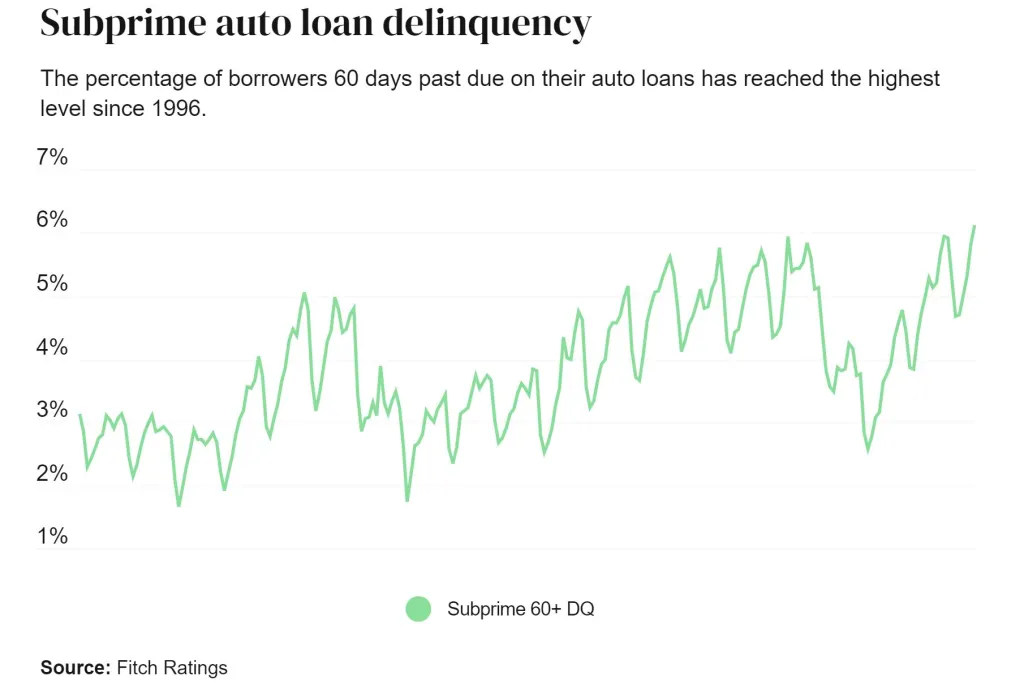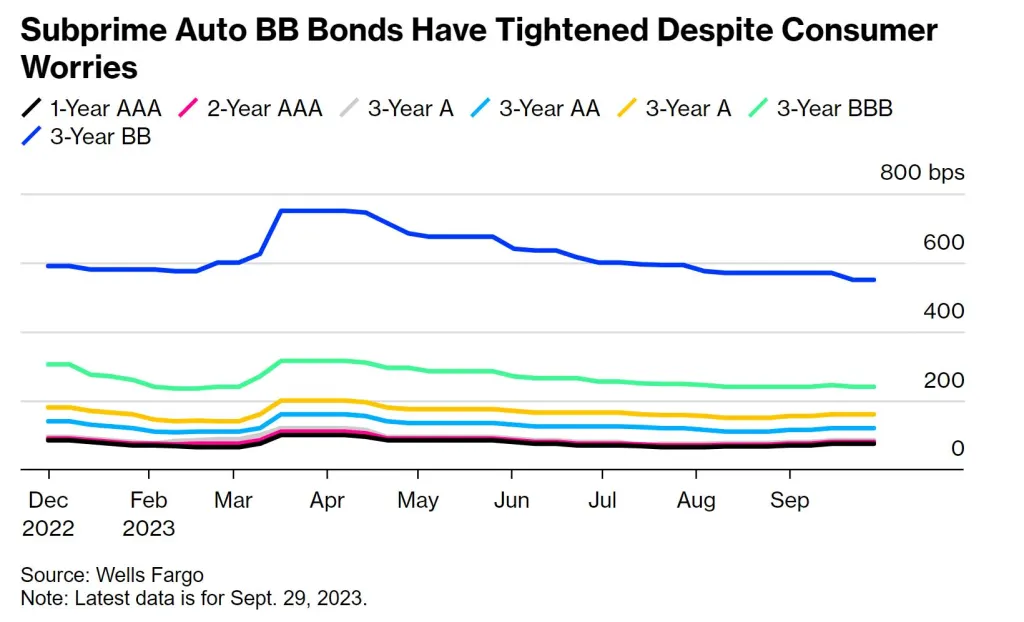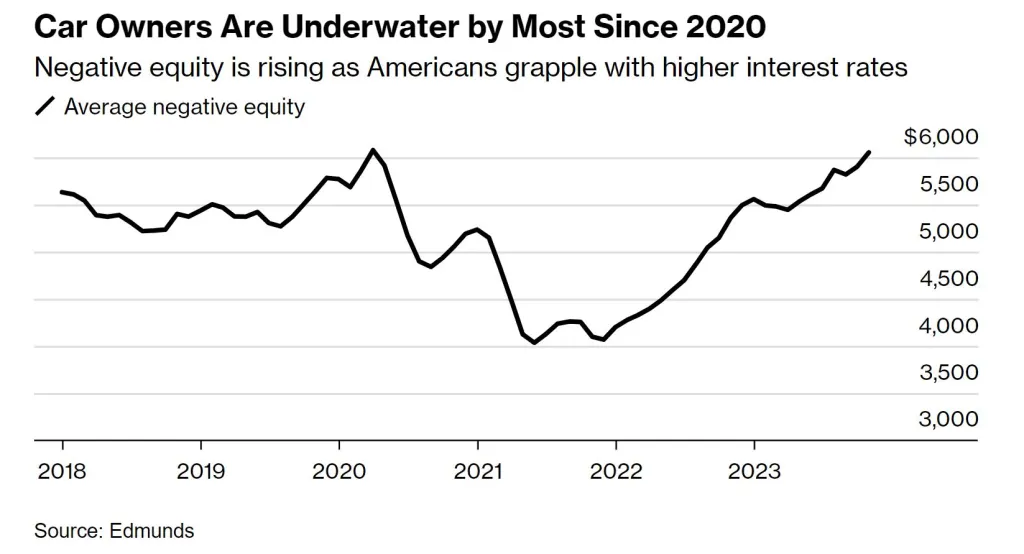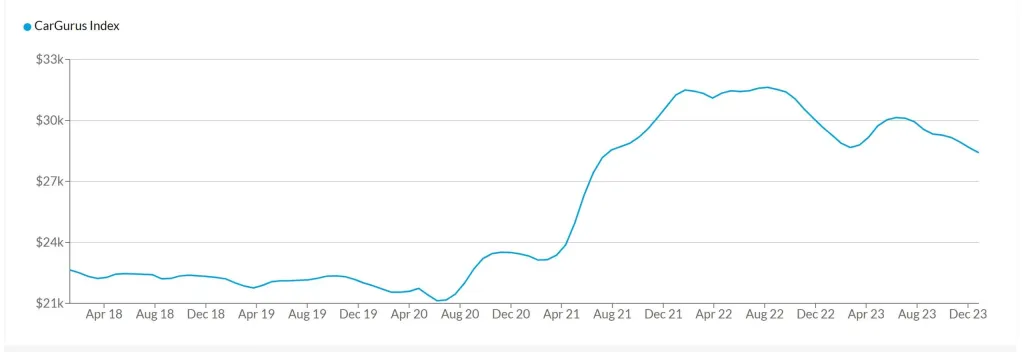Last spring, I wrote about the fragility in the auto lending market.
And since then, it appears that the auto market is showing increased signs of stress. Especially so for the subprime area.
Thus, I believe it’s a good time to remember the “boiling frog” parable.
In short, if a frog jumps into a pot of boiling water, it’ll immediately hop out. But if the frog jumps into a pot of semi-warm water, it’ll sit comfortably. But as the heat gradually increases to boiling levels, it’ll slowly cook until it’s too late to get out.
This parable reminds us why humans react quickly to sudden events (jumping into boiling water). But fail to react to slowly changing conditions until it is too late (sitting in water as it gets warmer and warmer).
So, what does this have to do with the auto market?
Well, it may be something that’s deteriorating slowly. And no one will notice until it’s too late (like the poor frog).
To give you some context: after two years – between 2020 to 2022 – of short supplies, excess savings, and extremely easy credit, the vehicle market boomed.
But since the second half of 2023, it’s cooling steadily.
A combination of rising missed payments, deeper negative equity, anemic real wages, and higher interest costs is souring the auto market.
And most importantly, could have repercussions for the auto-backed securities (ABS) – aka collateralized pools of auto loans and/or leases.
And like the frog in the pot of water, conditions may deteriorate further without many noticing until it’s no longer possible to escape.
Let’s take a closer look at all this.
The Pot Is Heating Up: Auto Loan Defaults Are On The Rise – Especially For Subprime
So, it’s no surprise how we got here.
After two years of both Federal Reserve (monetary) and U.S. Treasury (fiscal) stimulus, credit creation exploded.
And quite a bit of it flowed into the auto sector.
According to the recent St. Louis Fed data, there’s now over $1.55 trillion of U.S. auto loans outstanding (motor vehicle loans owned and securitized) as of Q3-2023.
And while it’s true that auto debt’s grown rapidly over the last decade – it’s accelerated post-COVID.
- For perspective, since Q2-2020, this number has increased by over $350 billion as Americans took out significantly more debt to buy vehicles – which is roughly $90 billion per year
And most of this aggressive auto borrowing came from the younger generations.
According to the World Economic Forum – between Q2-2020 and Q4-2022 – Gen Z (18-29 years of age) led the pack with a 31% increase in car loans. And the Millennials (30-39) saw a 29% increase.
Of course, the younger generations are more likely to buy vehicles than the older generations. But these numbers are still very high.
Now the problem is that consumers – especially these younger generations (the 18-39 age group) – are falling behind on their auto loans at a fast rate.
But what’s most troubling is the near 30-year high in subprime auto delinquencies -hitting 6.11% as of September 2023. 
Keep in mind subprime generally means those with poor credit scores – aka borrowers with a FICO score roughly between 501 and 600.
- You may remember the term “subprime” from the 2008 Great Financial Crisis when low credit score households were missing home payments left and right – which was a trigger point in nearly toppling the financial system.
Making matters worse, a November report from Cox Automotive found auto loan defaults increased by 4.2% in total in October compared to September – and were up 31% year-over-year.
Meanwhile, subprime auto loan defaults were up 20% year-over-year.
It appears that the increase in delinquencies is leading to increased defaults for auto loans.
No wonder the Used Car Week (UCW) 2023 conference noted that vehicle repossession events were some of the highest-attended segments.
“For the first time in the history of Used Car Week, the workshops and panel discussions focused on repossessions were some of the highest-attended portions of the entire event.”
Thus, with a mountain of auto debt and increasingly large auto payments on the back of higher interest rates and costs, consumers are growing increasingly fragile.
For instance, roughly 17.1% of consumers who financed a new car in Q2-2023 have monthly payments reaching $1,000 per month – marking an all-time high.
This is almost triple the number of consumers that were paying this much just three years before (only 6.7% in Q4-2020).
- To put this into perspective, real (adjusted for inflation) median U.S. household income (pre-tax and two or more people) in 2022 was roughly $70,000 – thus a $1,000-a-month single car payment is north of 17% of household income.
Most baffling is that “subprime” auto-backed securities (ABS) – which are pools of subprime auto loans diced up and thrown into tranches – have seen spreads tighten – implying that investors are less worried about consumers defaulting on their loans.
Just look at the spreads on BB-rated subprime auto-backed bonds as of October 2023
After selling off in March after Silicon Valley Bank (SVB) failed, subprime ABS has rallied – all while subprime delinquencies and defaults continue rising.
- Remember, widening credit spreads are indicative of an increase in credit risk, while tightening (contracting) spreads are indicative of a decline in credit risk.
What does this mean?
Well, I believe it’s troubling since the very things backing the securities – the subprime loans and asset vehicles – are facing pressure.
Meaning – not only are subprime borrowers missing payments, but vehicle prices have also been declining.
And that may be a big problem.
Auto-Owners Are Seeing A Surge In Negative Equity As Debts Overwhelm Car Values
Due to auto prices declining and debt burdens compounding (from higher interest rates), auto owners have suffered a spike in negative equity – aka being ‘underwater’ – which hit its highest level since 2020.
In short, when you’re underwater, it indicates that the amount owed on an asset exceeds the value of the asset.
- So, for example, if a person owes $20,000 on an auto loan but the vehicle is only worth $12,000, then they’re sitting on $8,000 in negative equity.
Thus, having greater negative equity is a fragile position for a borrower.
For starters, when the value of the vehicle drops relative to its debt balance, it doesn’t allow individuals to refinance easily (if at all) – especially at higher interest rates.
Secondly, even though trade-in values for cars have cooled over the last year (pushing negative equity deeper), individuals are still paying very high average prices for used vehicles compared to pre-pandemic levels.
Roughly 25% higher compared to four years ago (January 2019).
Thus, instead of refinancing with negative equity, many are stuck rolling old auto loans into a new one and even a third. Like they’re playing hot potato with ever greater auto debt burdens.
Some loans are now stretching 84 months (seven years) to help service all this.
Historically speaking, I believe this is the biggest issue that plagues financial systems – and that’s when asset prices begin falling as debt burdens actually increase (from compounding interest).
Underwater consumers generally end up having to deleverage (selling assets or cutting back consumption to pay their debts). Which then may lead to “debt-deflation” – a vicious amplifying feedback loop between distressed selling to repay debts and further pushing down asset prices. Thus, rippling throughout the entire economic system.
Now, while it’s true that auto loans aren’t a massive debt market relatively (although still large at over $1.5 trillion). The deepening of negative equity at a time when interest rates are higher is potentially an issue.
Bank Loan Demand For Auto Loans Has Dropped Negative
We’ve seen some significant tightening in the commercial bank sector for auto loans – on both the supply and demand side.
Just look at the chart below.
Consumer automobile loans (blue line) have plunged – hitting -4% as of late December (the first time since data collected it’s been negative).
Meanwhile, the percentage of banks tightening auto loan standards has risen to 14.6% – compared to when it was -18.6% in Q3-2021 as banks were loosening lending standards.
This implies that both higher interest rates have dissuaded new borrowers while also causing banks to scale back lending.
Now, of course, many private lenders will write their auto loans – which isn’t reflected in the commercial bank data.
But still, the appetite has faded.
So, I believe all this raises three big questions:
1. Private lenders are extending loans further to try and move inventory – otherwise car prices will keep declining if demand is weak.
For instance, if the masses don’t have an extra $30,000 lying around to outright buy a new car, they’ll either need debt or for prices to decline far enough.
Well, auto firms likely don’t want to see prices decline and crimp their margins – so they’ll make the loan when they can. But can it continue? There’s an auto price war mounting already.
2. If auto loan demand continues to weaken and delinquencies rise, this may put further pressure on auto prices – compounding the negative equity problem. Will it ripple into a feedback loop?
3. The subprime auto securities market is backed by these borrowers and their vehicles as collateral. Missing payments and falling auto prices aren’t exactly great things when holding onto these securities.
Imagine a game of Jenga with subprime blocks at the bottom. If enough of the pieces get yanked out, it can pull the whole thing down with it (or at least make it very wobbly). Is this something to worry about yet?
Wrapping It Up
Consumers are feeling the pressure of declining used vehicle prices, tighter credit (higher borrowing costs), and declining wage growth.
This trend may lead to a wave of defaults and increased negative equity, creating a feedback loop at the margin.
Subprime auto loans are most at risk as delinquency rates continue upward. And it doesn’t appear this will reverse anytime soon.
Households are paying an excessive amount in auto payments and are stuck rolling over into ever higher new auto loans.
Then whatever institution – whether a pension fund or insurance firm or etc – that’s holding the auto-backed securities is at potential risk.
It seems like something has to give.
But – until then – here’s a friendly reminder.
The subprime market is often the first to show potential issues – and the subprime auto loan market is beginning to show some.
